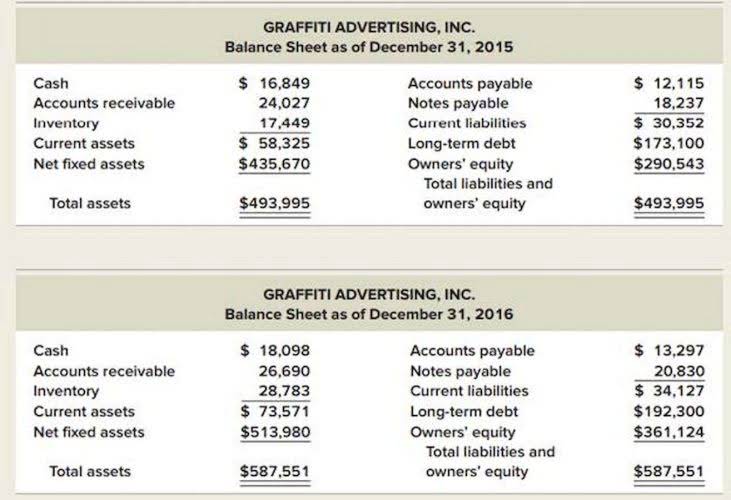
This metric is essential for understanding https://millionhits.net.au/amssurfaces/best-online-accounting-certificate-courses/ the liquidity of the business and its ability to sustain operations without relying on external financing. Positive cash flow from operations indicates that the winery can cover its operating expenses and invest in growth opportunities. Running a vineyard or winery involves more than just cultivating grapes and producing wine; it requires meticulous financial planning and strategic accounting.
Expense accounts
- Assuming that increased production decreases wine costs per unit is a common mistake.
- Speaking of exporting and importing transactions, account numbers for your accounts are essential to efficiently doing so.
- As the owner, it is your job to keep track of all aspects of this business.
- Loans and fixed assets will be recorded on the balance sheet rather than on the profit and loss.
- It relies on accurate data input and recordkeeping to trace costs through the manufacturing process.
When using the cash basis for tax, the tax prepreparer has more flexibility in applying tax regulations to your situation to ensure you are minimizing your tax liability. Based on your winery’s unique requirements, we will customize an accounting solution specifically for you. For example, if the area normal balance dedicated to packaging takes up to 30% of your total facility floor space, you can apportion 30% of your total rent and building insurance to package. Conversely, utilities are usually broken down by actual consumption per production stage, unless all departments are using nearly equal amounts of energy. Knowing the COGS is essential if you want to know the gross profits you earn on different wines.

Free Winery Chart of Accounts Template
Over time, having good management information will help your winery become more profitable and valuable. Knowing your financial information is accurate and timely will give you freedom to work on more enjoyable aspects of your business. It offers a valuable view of the results and sets the tone for future growth. By following this checklist and consulting experienced experts like the team here at Protea Financial, you can make it through this period at ease and maintain your winery’s bottom line. Contact Protea Financial today to find out more about how we can support your winery’s year-end accounting.

Winery accounting that helps you grow.
Grape costs may be recorded in a separate account initially, but these costs become part of the bulk wine inventory along with additional crush, fermentation, and cellar costs. The bulk wine cost with additional storage and overhead is combined with the cost of packaging materials used along with bottling labor to derive the individual unit cost of the finished wine. Inventory valuation determines the financial worth of a winery’s stock at any given time. Accurate valuation is crucial for financial reporting, pricing strategies, and tax calculations. It helps wineries understand their current assets, manage stock levels efficiently, and make informed business decisions regarding production and sales.
How does cellar accounting differ from other types of wine accounting?
Direct costs are those that can be directly attributed to the production of grapes, such as labor, fertilizers, and water. Indirect costs, on the other hand, include overhead expenses like equipment depreciation, property taxes, and administrative salaries. By accurately categorizing winery bookkeeping these costs, vineyard managers can gain a clearer picture of where their money is going and identify potential areas for cost reduction.
OUR SERVICES
✔️ Inventory Valuation Reports – If your accountant is only looking at your books and not considering the actual wine inventory, you could be missing major financial details. Proper inventory valuation ensures that your balance sheet reflects what’s really happening in the cellar. ✔️ Cost of Goods Sold (COGS) Reports – Knowing your COGS isn’t just about tax time—it’s about understanding your true margins. If you don’t have a clear picture of how much it costs to produce each bottle, you could be selling wine at a price that’s cutting into your profits.

A common method of allocating shared facility costs to functional departments is to capture such expenses in a cost center and allocate them based on the amount of space occupied by each department. Classification of overhead costs can vary, depending on the size of the facility and whether there are shared uses of facilities by other revenue streams, such as facility rental or custom crush services. Note that packaging materials should be applied to the cost of finished goods inventory as used and may be specifically assigned to wines or allocated to all wines bottled in the period. This method values inventory based on the average cost of all similar items available during the period. When costs aren’t easy to trace, it may be preferred to use an average, weighted average, or other ratio for applying costs.
- Partnering with an outsourced bookkeeping service like Protea Financial can alleviate these burdens and significantly simplify the implementation and maintenance of accrual accounting for your winery.
- While QuickBooks Online is a very robust and efficient bookkeeping software for wineries, there are still features within the platform that we don’t use.
- These should be broken out from sales revenue and recorded in liability accounts.
- This type of accounting is essential for both individual collectors and commercial entities to manage their stock, understand consumption patterns, and assess the financial value of their wine collection.
- For example, the cost of maintaining irrigation systems can be allocated based on the number of hours they are used for different grape varieties.
State and local permits vary but typically include health department approvals, environmental permits, and zoning permits. Applying early is essential due to the complex and time-consuming approval processes. Initial costs include purchasing land, establishing the vineyard, buying equipment, and obtaining necessary permits. You can expect to spend anywhere from $600,000 to $1,000,000 for a small winery. Major expenses involve land acquisition, vineyard planting, fermentation tanks, bottling machinery, and labor costs. Where a traditional bookkeeper would have to take time to look up regulations or requirements, a winery accountant knows these things from experience.
Leave a Reply